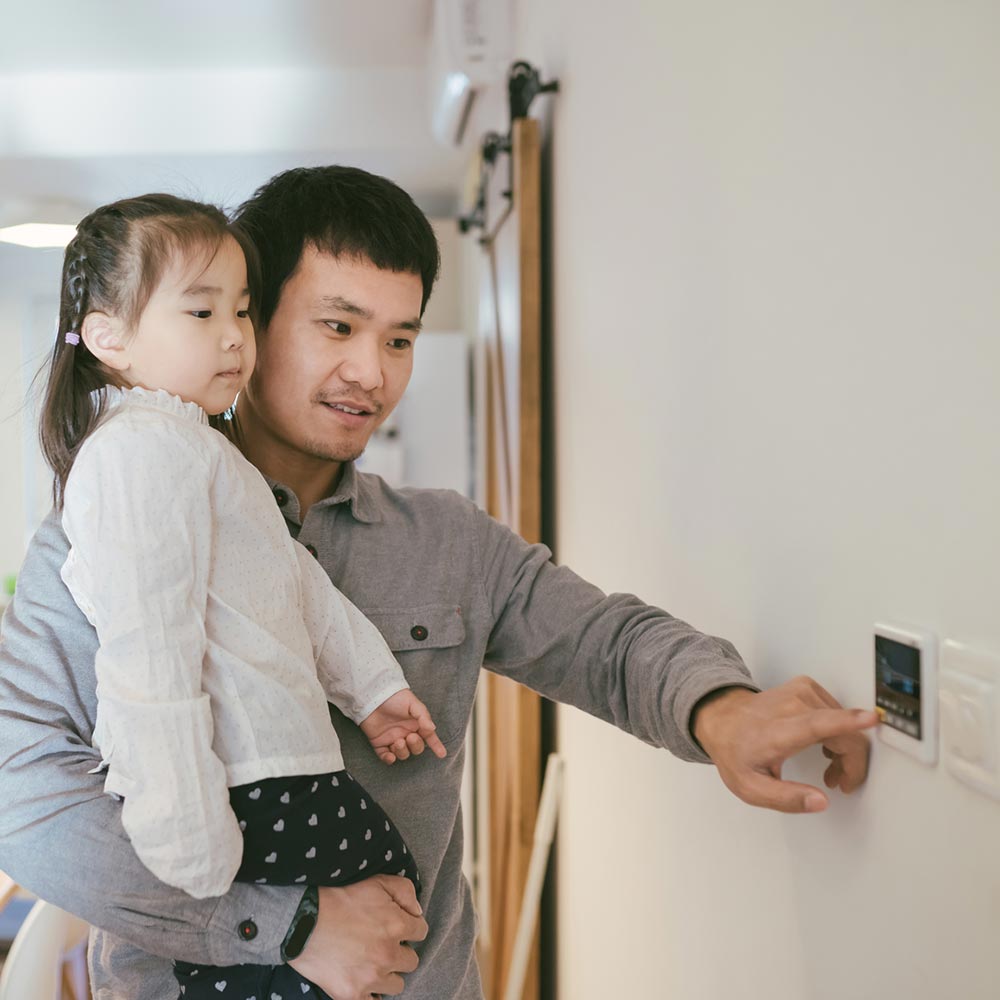What is a smart home device?
A smart home device is any hardware device that shares data over a network.
How do you control a smart home device?
Controlling a smart home device can happen through a variety of avenues depending on the device manufacturer. Some of the popular methods of control include the device manufacturer's software applications that run on your smartphone, a web-based software application accessible on a browser, voice control (Google / Alexa), or a device aggregator such as Yonomi.
What are examples of smart home devices?
Let’s walk through a few real-life usage scenarios of smart devices across different device categories and industries.
-
Smart Lighting
Smart light switches or bulbs enable property managers, owners of multi-dwelling units, and homeowners can be turned on and off remotely, and mood lighting can also be set for arriving guests.
-
Smart Thermostats
Smart thermostats enable property managers, owners of multi-dwelling units, and homeowners to monitor and adjust temperatures from anywhere via an application on their smartphone.
-
Smart Locks
With smart locks, property managers, owners of multi-dwelling units and homeowners can lock and unlock doors as well as manage pin codes from afar, never having to visit a unit. They can also monitor battery levels, so they know when to expect a replacement run.
-
Smart Security Systems
Smart security systems enable users to monitor access points into their homes, such as the front door. They can view visitors from an application as well as “see” when a package has been delivered. A number of devices can be combined to make this system; think motion sensors, door/window sensors, cameras, and even speakers!
What are the benefits of smart home devices and smart home automation?
Smart home devices are of benefit to individual homeowners but also for owners and managers of multiple properties. Smart home devices can create operational efficiencies, reduce risk, and enhance the guest experience. As one example, the ability to remotely change and manage pin codes for the door lock minimizes the need to be on-site to let visitors in.
In addition, managing temperatures remotely reduces cost but also can make the guest experience much more inviting. Imagine arriving at your vacation rental with the lights on and the temperature at a perfect 68 degrees.
What is the difference between a smart device and a connected device?
Smart devices can also be referred to as connected devices or Internet of Things (IoT) devices. However, “connected device” is a broader term that also can include any device that connects to the internet, such as a laptop or phone. It may not have a focused capability that can be controlled remotely and operate with some level of automation, such as the examples shared above. In fact, we can think of smart devices as a sub-set of connected devices.
9 Smart Home Devices That Are Worth the Investment
The possibilities really are endless in terms of what hardware devices can become smart devices. Here is a list of 9 IoT or Smart Devices to get you thinking.- Smart lock
- Smart thermostat
- Smart security system
- Smart blinds
- Smart speaker
- Smart leak detector
- Smart refrigerator
- Smart dishwasher
- Smart vacuum
How do IoT or Smart Devices Connect to the Internet?
Smart devices connect to the Internet through a specific network communications protocol, of which there are several. These include but are not limited to Zigbee, Z-wave, wifi, and Bluetooth. Networking protocols are important because, with some network protocols, a hub is required to communicate with the existing wireless network to access the internet. For example, the Philips Hue devices leverage a Zigbee network, and therefore, you need a Zigbee hub (think modem but for your smart devices) to connect to the wireless network.
If you connect to the internet using a specific hub (such as Zigbee or Zwave compatible hubs), you will need to ensure the subsequent devices you choose to buy are compatible with that hub. For example, if you buy a thermostat that connects to the internet via Zwave, then it makes sense to choose other hardware devices that leverage the Zwave protocol.
How do smart home devices integrate with your software application?
The most cost-effective, scalable, and future-proof way to connect devices to your software application is by using an IoT device management platform. Yonomi is one example of this type of platform.
Yonomi aggregates devices across manufacturers and exposes them over a standardized API to provide a path for software solutions.
The IoT platform approach enables software developers to focus on application development as opposed to spending precious development dollars learning and connecting to each device API individually. Each 3rd party API is designed differently and, as a result, ingested differently by the Yonomi platform to provide a consistent middleware between your application and multiple device APIs with varying data access and transfer standards. The Yonomi Platform uses the concept of traits to allow the same interaction across five different lightbulb brands that essentially look and feel the same. This means once you connect your application to one device type, you can add multiple brands of the same device type with little efforts, such as multiple brands of locks and/or multiple thermostat brands—future-proofing your development effort as device manufacturers change and evolve and consumer preferences change.
At Yonomi, our mission is to enable and accelerate the building and delivery of rich, smart home applications for solution providers. To do this, we’ve built an IoT Platform with connectivity to 100+ mass-market consumer devices as well as devices required for specific vertical industry use cases.
If you are interested in testing the platform, visit our developer portal.
Alternatively, if you would like to speak to a person and take a deeper dive, please schedule a meeting directly with our sales team.




